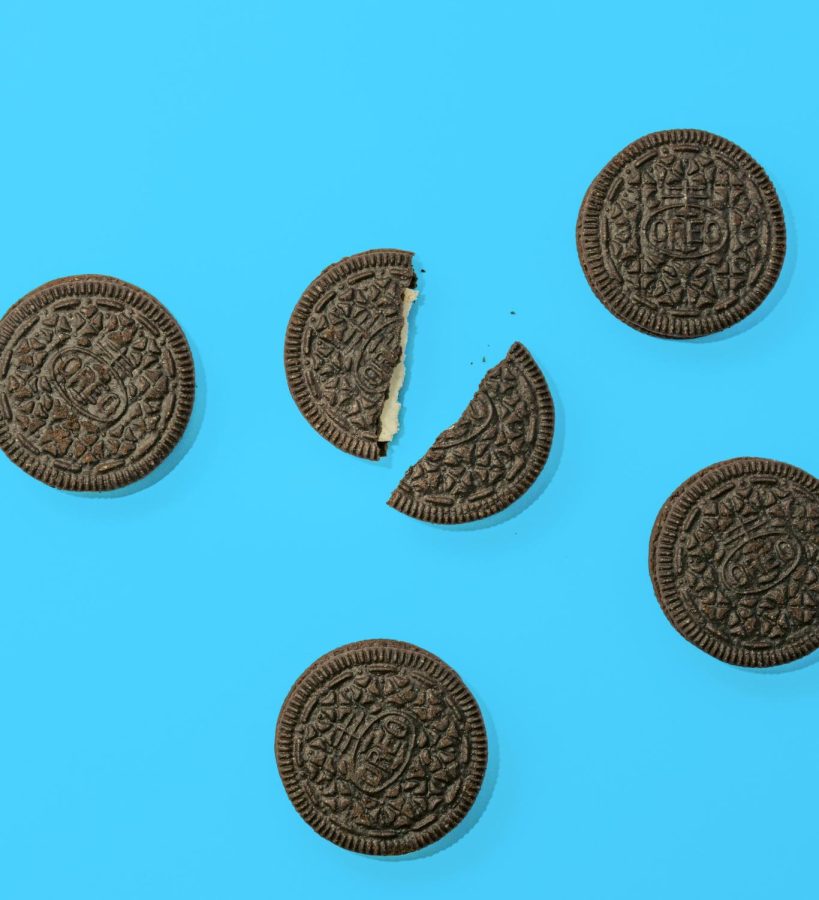The Absurd History of Oreo Flavors
There are over 85 flavors of Oreos, how did we get here?
Photo by submitted
There’s more than meets the eye with this delicious snack.
Let me take you back one hundred and ten years ago to 1912. Woodrow Wilson has been elected president. New Mexico and Arizona recently became states. The University of Wisconsin just founded their Department of Journalism.
However, one historical event stands above the rest, and that is the release of the Oreo.
Fun fact: The RMS Titanic, a boat famous for the one thing boats don’t want to be famous for, set sail exactly one month after Oreos became available to the public, which means a package of the cookies could have gone down with the infamous ship.
Now, you may be wondering why this event wasn’t included as a lyric in “We Didn’t Start the Fire” or taught in your AP history class, but that’s probably because the Oreos of yesteryear looked a lot different than the delicious sandwich cookie we know and love today.
The original and most famous Oreo has a simple design, a creamy core sandwiched by two chocolate flavors. For the next fifty-two years, this recipe saw very little variation. A few ingredients were swapped as time went on, but the core concept and flavor was strictly maintained.
However, this all began to change in 1974, when Nabisco released the now ubiquitous Double Stuf Oreo.
Along with the confusing and inexplicable spelling of the word “stuff,” the Double Stuf Oreo also made another daring choice that would go on to shape the snack’s history; additional flavors.
With the release of the Double Stuf Oreo, Nabisco also unleashed four new filling flavors. These were chocolate, peanut butter, cool mint and birthday cake. All reasonable choices, but the opening of this Pandora’s box sent Nabisco’s flavor engineers off to the races.
In the following fifty years, Nabisco has released over eighty-five flavor variations for their Oreo cookies. They range from intriguing (salted caramel) to baffling (cookies ‘n’ cream) to outright terrifying (hot chicken wing).
Important note about Oreo’s hot chicken wing flavoring: it is only available in China, so if you have some vendetta against your tastebuds, you’ll have to book a plane ticket to test this affront to basic culinary logic.
Coincidentally, another historical event that coincides with the release of the original Oreo is the foundation of the Republic of China.
The extreme variation and over specification of Oreo flavors is reflective of an ongoing trend in many snacks. Cheez-it has had over forty flavors over the course of its one hundred year history. M&M’s have over seventy, including jalapeno.
This may all seem absurd, but at the end of the day I think it reflects a positive trend across modern popular culture.
It’s easy to make fun of oddly specific products when they personally have no appeal to your life, but the reason they’re on the market is because it’s the exact product someone out there has been waiting to see on the shelves.
As a culture, we’re continually becoming more conscious of the diversity of experiences across the world and in our own surroundings. Lifestyles, opinions and, yes, snack tastes that would generally be ignored in the past are being brought more into the mainstream and recognized as being just as valid as our traditional norms.
Are snack flavors a trivial and absurd example of this change? Absolutely. However, I do think it’s an uplifting reflection, on some small scale, of the progress we have made as a society since that first sandwich cookie was introduced in 1912.
Porisch can be reached at porischn7213@uwec.edu.

Nick Porisch is a third-year English student, and this is his fourth semester at The Spectator. Most of the time you can find him just sitting around someplace, potentially writing but usually just sitting. On the rare occasion he’s not sitting around, he might be rock climbing or running. But most likely he’s just sitting somewhere.


